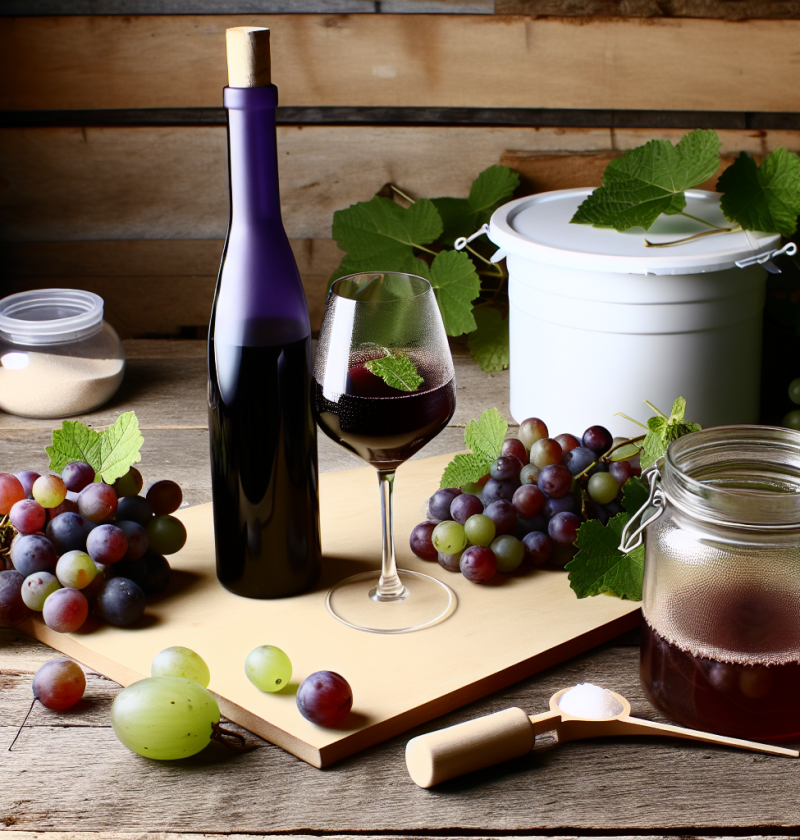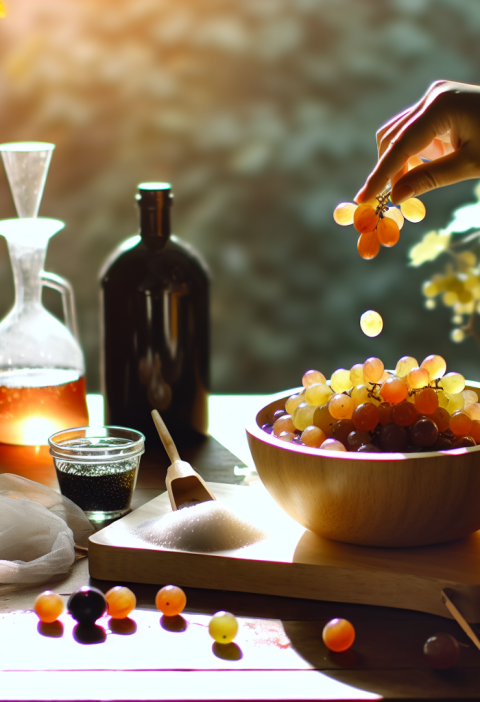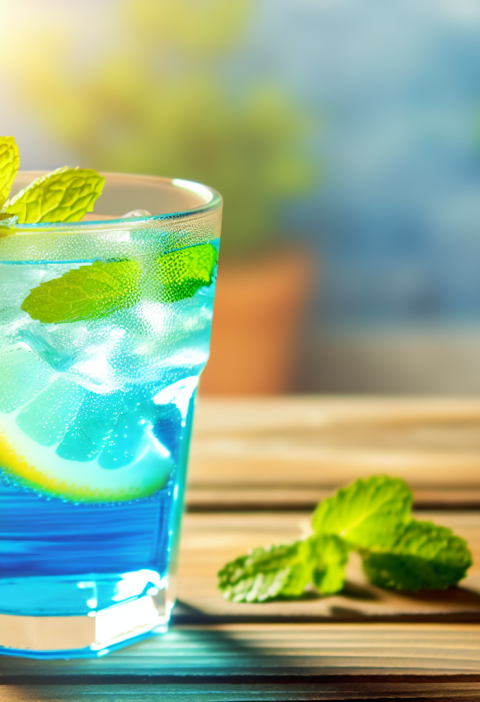“`html
Unleashing Flavor: The Ultimate 5-Gallon Muscadine Wine Experience
Have you ever wanted to transform nature’s sumptuous muscadine grapes into a vibrant, homemade wine that will captivate your senses? Imagine the sweet, rich aroma of fermenting grapes wafting through your home, leading to a delightful end product that tickles your palate and warms your heart during family gatherings and celebrations. Trust me, it’s an enriching journey that will make you feel like a true winemaker! With this detailed guide, you’re about to embark on crafting a sensational 5-gallon batch of muscadine wine that is perfect for toasting with friends and family. The process, while intricate, is truly rewarding and allows you to enjoy a tradition that has been cherished for generations. Are you ready to dive in? Let’s get started!
Preparation Time
- Preparation: 30 minutes
- Fermentation: 1-3 weeks (primary fermentation), followed by 4-6 months (secondary fermentation)
- Bottling and Aging: 2-4 weeks for optimal flavor
This recipe yields about 5 gallons of muscadine wine, suitable for gatherings or personal enjoyment, and presents a medium difficulty level, making it perfect for those wanting to expand their culinary repertoire.
The Necessary Ingredients
- 15-20 lbs of ripe muscadine grapes
- 2-3 lbs of granulated sugar (to taste)
- 1 packet of wine yeast (like EC-1118 or Montrachet)
- 6-8 teaspoons of potassium metabisulfite (optional, as a preservative)
- Water (as needed)
- Optional tannin or acid blend (for flavor balance)
For a vegan version, ensure that the wine yeast is vegan-friendly. If you’re looking for a gluten-free approach, rest assured that this wine is naturally gluten-free, but always check for any additives that may contain gluten. You can also experiment with different types of sugar, like brown sugar or honey, to explore various flavor profiles.
The Steps of Preparation
Follow these steps to create your luscious muscadine wine, blending tradition with your personal touch for a truly unique product.
- Gather the muscadine grapes, removing any stems, and wash them gently to clean.
- Crush the grapes by hand or with a potato masher until the juice is released.
- Transfer the crushed grapes along with their juice into a sanitized fermentation vessel.
- Add sugar to the crushed grape mixture, starting with 2 lbs, and stir well to dissolve.
- Test the specific gravity with a hydrometer and adjust the sugar level to achieve your preferred sweetness.
- Sprinkle the wine yeast over the mixture and stir gently to combine.
- Cover the fermentation vessel with a clean towel, allowing airflow while keeping out contaminants.
- Let the mixture ferment for 1-3 weeks, stirring daily and watching for bubbles to indicate active fermentation.
- After primary fermentation, strain the liquid into another sanitized vessel, leaving solids behind.
- Add potassium metabisulfite if desired, and transfer the wine into a carboy with an airlock attached.
- Allow the wine to undergo secondary fermentation for 4-6 months, monitoring flavors and clarity.
- When the wine is clear and has reached your taste preference, prepare clean bottles for bottling.
- Siphon the wine into bottles, leaving some airspace, and cork securely.
- Age the wine for at least 2-4 weeks before enjoying it to develop flavors.
Each of these steps illustrates a labor of love, a connection to the earth, and a chance to reflect on the moments in life that deserve a good glass of wine. The process may seem long, but every minute spent waiting adds to the character of the wine. And trust me, it’s absolutely worth it.
Nutritional Benefits
- Rich in antioxidants, particularly resveratrol, which can help protect against heart disease.
- Contains vitamins such as vitamin C and B vitamins, supporting immune health and energy levels.
- Provides beneficial plant compounds that may reduce inflammation.
- May improve gut health due to the presence of probiotics during fermentation.
Now that we’ve discussed the benefits, let’s explore potential upgrades and variations to elevate your homemade muscadine wine.
Possible Additions or Upgrades
- Add spices such as cinnamon or clove during fermentation for a warming flavor.
- Include other fruits like peaches or berries to create a delightful blend.
- Experiment with different yeast strains to explore varying flavor profiles.
- Add oak chips during aging for a more complex flavor profile.
These enhancements not only individualize your wine but also celebrate your personal tastes and preferences! By including other ingredients, each bottle you create could tell its own story, reflecting moments shared around the table.
Questions and Answers
**What type of grapes are best for this recipe?**
Muscadine grapes are ideal due to their unique flavor and high sugar content, but any winemaking grape can work.
**Can I use frozen muscadine grapes?**
Absolutely! Frozen grapes can be used, but ensure they are thawed completely before crushing.
**How do I know when fermentation is complete?**
Fermentation is complete when bubbles stop forming, and the specific gravity reading stabilizes over a few days.
**Do I need to use an airlock?**
While not necessary, using an airlock helps prevent contamination and allows gases to escape.
**Can I carbonate my muscadine wine?**
Yes, you can carbonate it if desired, but this requires additional steps and equipment.
**Is there a way to speed up the fermentation process?**
Maintaining optimal temperature around 70°F (21°C) can help speed up fermentation.
**How long does muscadine wine last?**
When properly bottled and sealed, your wine can last for several years, though it is best enjoyed within the first year for freshness.
**Can I make this recipe without adding sugar?**
You can eliminate the added sugar, but keep in mind that the wine may have lower alcohol content and a different flavor profile.
**How do I store my wine after bottling?**
Store bottles upright in a cool, dark place to preserve flavor and prevent spoilage.
**What is the best way to serve muscadine wine?**
Chilled muscadine wine pairs wonderfully with cheese, light proteins, or even enjoyed on its own with good company!
From my experience, making wine at home brings joy and a sense of tradition that connects us with our roots. It’s a beautiful process that’s worth every moment—imagine gathering with family and friends, sharing stories over a glass of your own creation. Trust me, the pride you’ll feel while pouring that first glass will be unforgettable! Don’t forget to share this recipe with your friends on social media; let them join you on this delightful journey of winemaking!
“`







